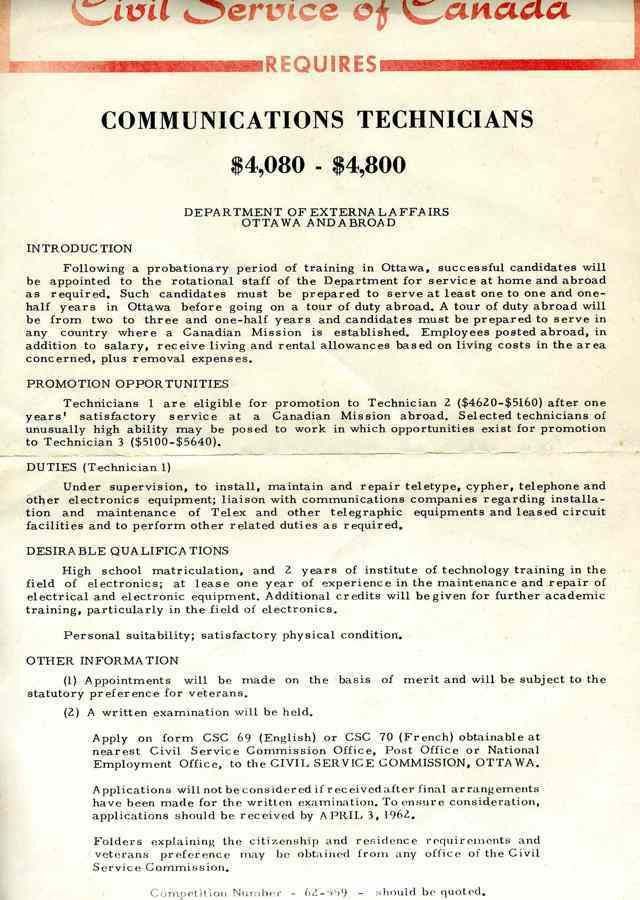

The Canadian Diplomatic Communications Service employed electronics technicians in Ottawa and at many Canadian diplomatic missions abroad. These techs provided support for the many electronic and electro-mechanical systems used by the department.
While their primary responsibility was the installation and maintenance of the department’s international telecommunications system operated by the communicators, their role evolved to include office telephone switchboards, intrusion alarms, locks, local emergency radios and even home entertainment systems.
Some of the technicians joined the department after serving in Canada’s military. Others were recruited from private industry, educational institutions and the scientific community. A few communicators found the work so interesting they transferred to the technical group where their practical talents and experience enabled the telecommunications systems to be further improved.
One might think that the department would employ “state of the art” telecommunications equipment. In some cases this was true. However, as it was a worldwide system, it necessarily needed to accommodate the various communications technologies and signaling protocols employed by the commercial “common carriers” in the countries being served. Where it was not possible to lease a circuit, Telex Ô, diplomatic couriers carried correspondence between Canadian missions and Ottawa.
In the 60’s just about every telegraph circuit was technically unique. Some were “neutral” some were “polar” some were “quarter-speed” and others were “synchronous” or “isochronous”. Many were troublesome and all required a technical understanding. RS-232 was in its infancy.
To complicate matters, electrical power services outside North America came in many flavors of voltage and frequency. This meant that the electro-mechanical Teletype Ô equipment required gears and motors (even light bulbs) corresponding with local conditions.
To protect the content of communications with missions abroad, the messages were frequently encrypted. As the intelligence organizations in some countries were quite inquisitive, a series of security policies, procedures and practices were employed and rigorously enforced.
Today, much of the older telecommunications technology has been replaced with throwaway replacements that do not require the same diversity of technical understanding. The leased circuits have since been replaced with satellite linked internet-like systems accompanied with their own set of challenges. The techs and communicators have been replaced too.
T. E. (Buck) Arbuckle's Technically Challenged article describes some of his early memories as a technician in the department.

Technical staff deployment chart circa 1977-78 (Photo Credit: Maurice Rainbow)

Buck's office in the East Block Office 1973 prior move to L. B. Pearson Building on Sussex Drive. (Photo credit: Raymond Fortin)
An article by Buck about the People and Equipment employed by External Affairs is also on Jerry Proc's Website

© OFARTS Canada 2006 Old Foreign Affairs Retired Technicians, Canada